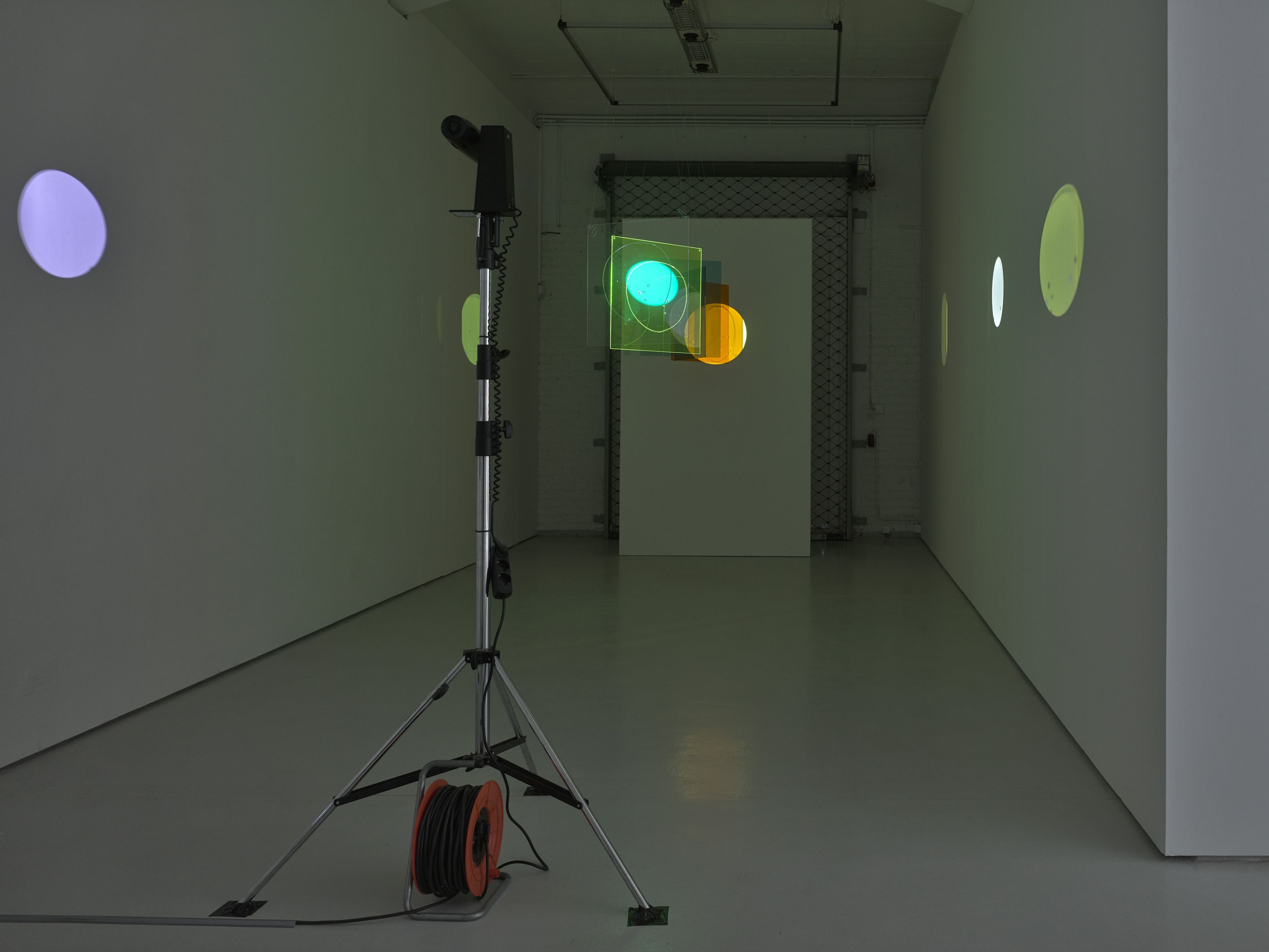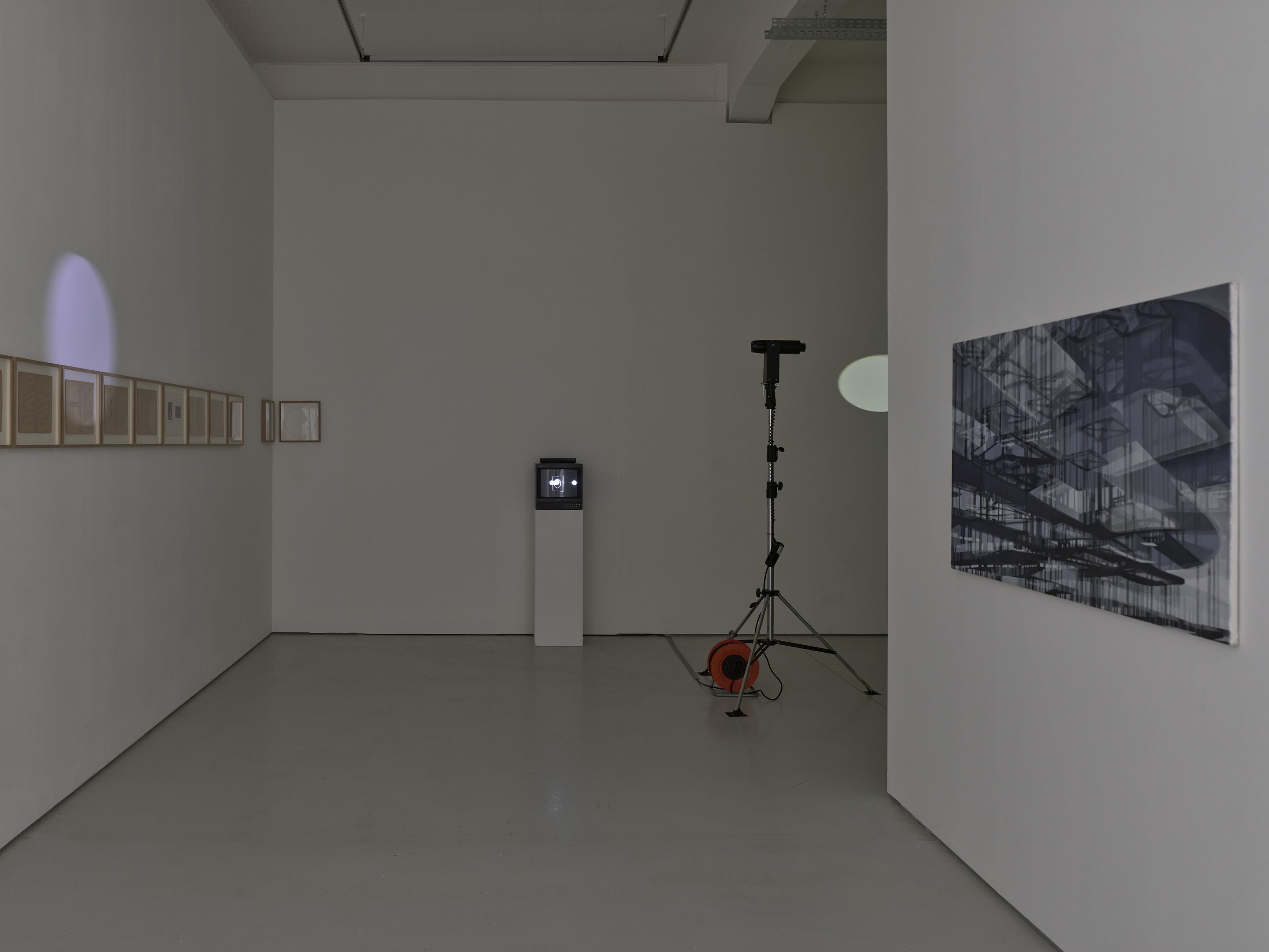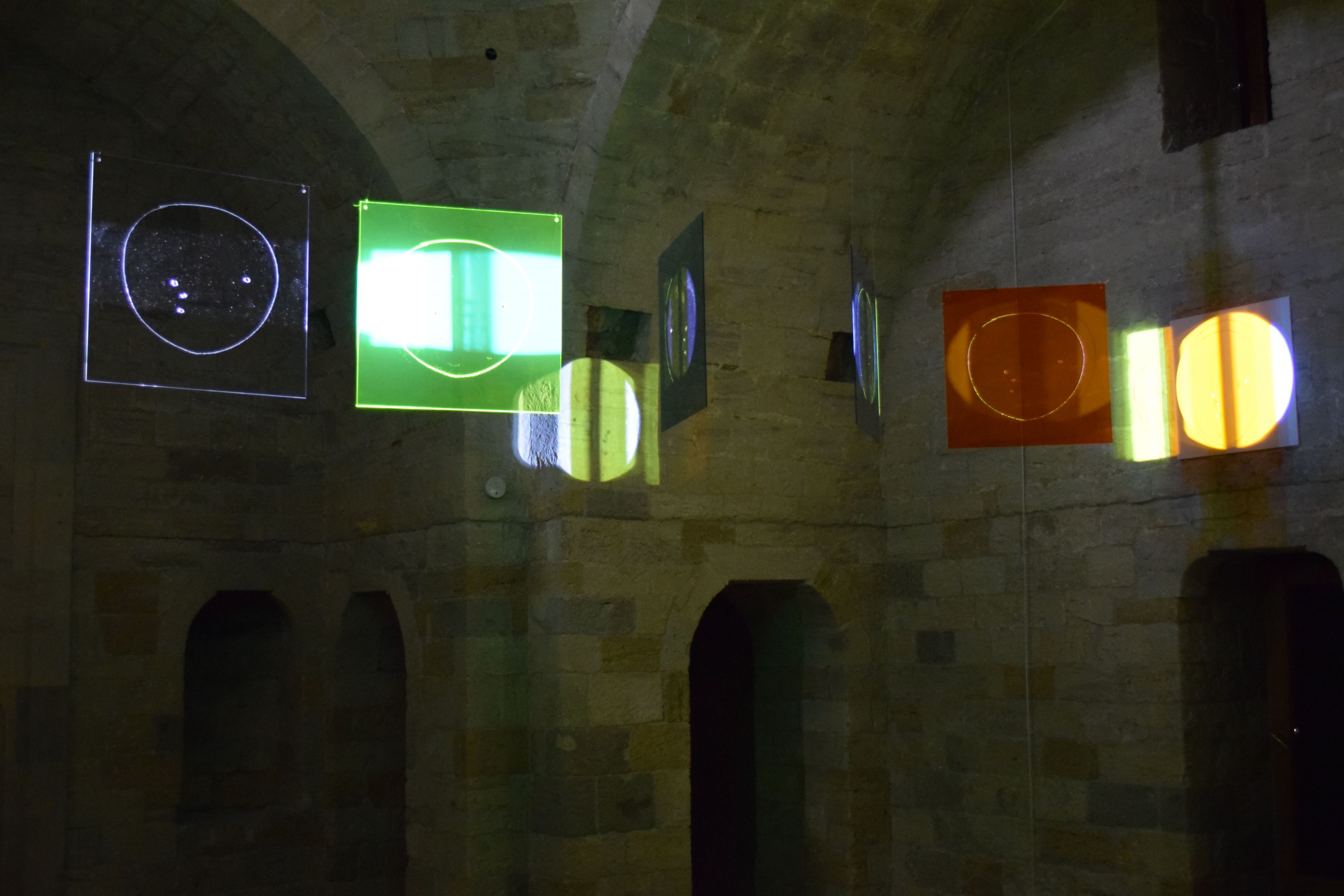five suns / after Galileo
2018
Light projections play a central role in the work of Mischa Kuball. However, Kuball differs from typical "light artists" in that his direct use of light is always linked to the reflection of social, political and scientific issues.
five suns / after Galileo refers to an important astronomical discovery made by the Italian polymath at the beginning of the 17th century. He observed dark, moving and changing spots on the sun's disk. Although he was not yet able to clearly identify them, the "sunspots" supported his view of the world according to Copernicus. This contradicted the dogmas of the church, but proved to be in line with the facts: The earth is not a disc, but a sphere and not the center of the universe, but one of the planets revolving around the sun. The light that Kuball directs onto five rotating, colored round discs and that creates fascinating changing color effects in the room and on the walls can be read as the light of knowledge that is directed into the universe. But why five "suns" and not just one? Isn't all knowledge dependent on point of view, on perspective, and therefore never universal? Kuball's examination of scientific questions always asks about the similarities between science and art. Was Galileo not also to be regarded as an artist, as the art historian Horst Bredekamp suggested in a widely read study? The depictions of sunspots in Galileo's own drawings are also aesthetically impressive. The small holes in the disks of the Five Suns take up Galileo's drawn spots and allow them to wander imaginatively through space.
Work information
- Room-related light installationprofiler, gobo, 5 plexiglass panels each 600 x 600 x 3 mm, 5 rotary motorsvariable dimensions
- Framed paper workspaper and plexiglass, processed with lasercut 13 framed works on paper, each 33.5 x 41.5 cm (pages from the publication "Die Photographie des Unsichtbaren, Generalmajor a.D. J. Peter. Die Okkulte Welt 31/32. 1921" )2 framed works, each 31.5 x 31.5 cm
Exhibition list
- 2018 „Catching the light“, KAI10 / ARTHENA FOUNDATION, Düsseldorf13.04.-07.07.2018
- 2018 „five suns / after Galileo“, Goethe Zentrum, Shah mosque of the Shirvanshah‘s Palace, Baku03.06.-01.10.2018
- 2019 „five suns / after Galileo“, Schafhof - Europäisches Künstlerhaus Oberbayern, Freising03.04.–10.06.2019




